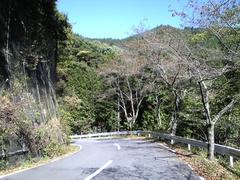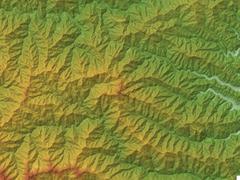Raiden Todoroki Bridge: Visiting Hours, Tickets, and Comprehensive Travel Guide to Chichibu Historical Sites
Date: 04/07/2025
Introduction
Nestled in the breathtaking mountains of Chichibu, Saitama Prefecture, the Raiden Todoroki Bridge stands as a remarkable intersection of modern engineering, natural beauty, and cultural heritage. Its innovative double-loop design and harmonious integration with the Takizawa Dam have made it both a vital infrastructure project and an iconic destination for visitors. This detailed guide covers everything you need to know for a rewarding visit—including history, architectural highlights, travel tips, accessibility, nearby attractions, and sustainable tourism insights.
Table of Contents
- Overview & Cultural Significance
- Historical Context and Engineering Details
- Architectural Features & Innovations
- Visiting Hours, Tickets, and Practical Information
- Accessibility, Transportation, and Facilities
- Nearby Attractions & Local Experiences
- Safety and Seasonal Tips
- Sustainable Tourism & Environmental Considerations
- Frequently Asked Questions (FAQ)
- Conclusion
- Sources
Overview & Cultural Significance
The Raiden Todoroki Bridge is celebrated for its unique double-loop, steel arch structure—an engineering solution to Chichibu’s dramatic elevation changes. Completed in 1998 as part of the Takizawa Dam project, the bridge exemplifies Japan’s commitment to blending infrastructure with its natural landscapes. Its name, referencing the thunder god (“Raiden”) and roaring sounds (“Todoroki”), draws from local folklore and the valley’s powerful ambiance (Tripnote).
The bridge is more than just a feat of engineering; it is a symbol of Chichibu’s transformation from a secluded region to a thriving, accessible destination for tourists, engineers, and nature lovers. It forms a gateway to the Chichibu region’s renowned scenic sites, pilgrimage routes, and vibrant cultural festivals (Live Japan).
Historical Context and Engineering Details
Strategic Importance
Chichibu’s rugged terrain and river systems have historically limited transportation and economic development. The construction of the Raiden Todoroki Bridge—integrated with the Takizawa Dam—was a major milestone in overcoming these challenges, creating a vital artery along National Highway 140 and enhancing regional accessibility (JWA Chichibu 1-Day Guide, PDF).
Engineering Innovation
The bridge features a rare double-loop design, allowing vehicles to safely ascend or descend a steep 120–125 meter elevation within a limited horizontal distance. Advanced construction materials—reinforced concrete and weathering steel—ensure both seismic resilience and long-term durability in Japan’s earthquake-prone environment (Highest Bridges).
Construction and Project Milestones
Built as part of the final phase of the Takizawa Dam initiative, the bridge was developed in close coordination with multiple government agencies. Its completion marked the beginning of a new era for Chichibu, opening up the region to tourism and revitalization efforts.
Architectural Features & Innovations
- Design: Steel arch with double-loop spiral, minimizing gradient and maximizing safety and scenic value.
- Materials: Reinforced concrete and weathering steel for durability, seismic resistance, and low maintenance (Eastern Engineering Group).
- Environmental Harmony: The bridge’s color and streamlined profile blend with seasonal foliage, while its minimal footprint protects the river gorge ecosystem.
- Safety: Features expansion joints, flexible bearings, and redundant load paths for seismic protection.
- Recognition: Awarded the Good Design Award and widely regarded in Japanese engineering circles.
Visiting Hours, Tickets, and Practical Information
- Visiting Hours: Open daily, best experienced from 8:00 AM to 6:00 PM for safety and optimal views. Hours may be extended during peak seasons (autumn foliage, cherry blossoms).
- Entry Fee: No ticket or entrance fee is required for visiting or crossing the bridge.
- Guided Tours: While no regular official tours are provided, local operators may include the bridge in sightseeing packages, especially during festival seasons (Japanrar).
- Bungee Jumping: Available via authorized operators; advance booking is essential.
Accessibility, Transportation, and Facilities
- By Train: Take the Limited Express from Ikebukuro Station (Tokyo) to Seibu Chichibu Station (approx. 78 minutes). From there, use local buses or taxis.
- By Car: Easily accessed via Route 140 (Saikai Kaido), with paid parking available near the bridge and dam.
- Facilities: Restrooms and vending machines provided. Observation decks are wheelchair accessible, but some pathways are steep due to the terrain.
- Signage: Bilingual in Japanese and English for ease of navigation.
Nearby Attractions & Local Experiences
- Takizawa Dam & Okuchichibu Momiji Lake: Adjacent to the bridge, offering beautiful waterside scenery and autumn foliage.
- Nakatsukyo Gorge: Stunning views, especially in fall (Tripnote).
- Chichibu Shrine: Historic shrine and focal point of the Chichibu Night Festival.
- Chichibu 34 Kannon Pilgrimage: Renowned spiritual route (Japan Guide).
- Saiko-ji Temple: Accessible by short hike, contributing to the region’s cultural richness.
- Local Cuisine: Savor Chichibu soba, waraji katsudon, and seasonal wild boar stew (Live Japan).
Safety and Seasonal Tips
- Driving: Observe speed limits and drive cautiously, especially in winter when roads may be icy.
- Footwear: Wear sturdy shoes suitable for uneven terrain.
- Weather: Prepare for rapid weather changes in the mountains; bring a rain jacket in autumn and spring.
- Crowds: Visit on weekdays or early mornings for a quieter experience.
- Bungee Jumping: Book in advance and review age/health requirements.
- Accessibility: Wheelchair access is available up to observation decks; bridge deck may be less suitable for some mobility devices.
Sustainable Tourism & Environmental Considerations
- Stay on marked trails and avoid picking plants to protect the ecosystem.
- Use public transportation where possible, minimize waste, and support local businesses.
- Ongoing maintenance and sustainable practices ensure the bridge’s longevity and minimal environmental impact.
Frequently Asked Questions (FAQ)
Q: What are the visiting hours for Raiden Todoroki Bridge?
A: Open daily, generally from 8:00 AM to 6:00 PM, with extended hours during peak seasons.
Q: Is there an admission fee or ticket required?
A: No, visiting the bridge is free. Bungee jumping requires advance ticket purchase.
Q: How do I get to the bridge from Tokyo?
A: Take the Limited Express train from Ikebukuro to Seibu Chichibu Station, then transfer by bus or taxi.
Q: Are guided tours available?
A: Local tour operators may offer packages that include the bridge.
Q: Is the bridge accessible for wheelchair users?
A: Observation decks and parking are accessible, but some slopes and the suspension deck may be challenging.
Q: What is the best time for autumn foliage?
A: Late October to early November.
Q: Are there nearby historical sites?
A: Yes, including Saiko-ji Temple, Chichibu Shrine, and the Chichibu 34 Kannon Pilgrimage.
Conclusion
Raiden Todoroki Bridge is a must-see highlight of the Chichibu region, offering a unique blend of engineering marvel, scenic beauty, and cultural depth. With free and easy access, robust visitor facilities, and proximity to historical and natural attractions, it is an ideal destination for travelers of all interests. Plan your visit during spring or autumn for the most spectacular views, and be sure to explore the broader Chichibu area for a truly enriching experience.
For real-time updates, travel maps, and exclusive insights, download the Audiala app and consult official tourism resources.
Sources
- JWA Chichibu 1-Day Guide, PDF
- Eastern Engineering Group
- Tripnote
- Triplyzer
- Live Japan
- Highest Bridges
- Japanrar
- Japan Guide
- Trip Kabudata
- Tsunagu Japan

